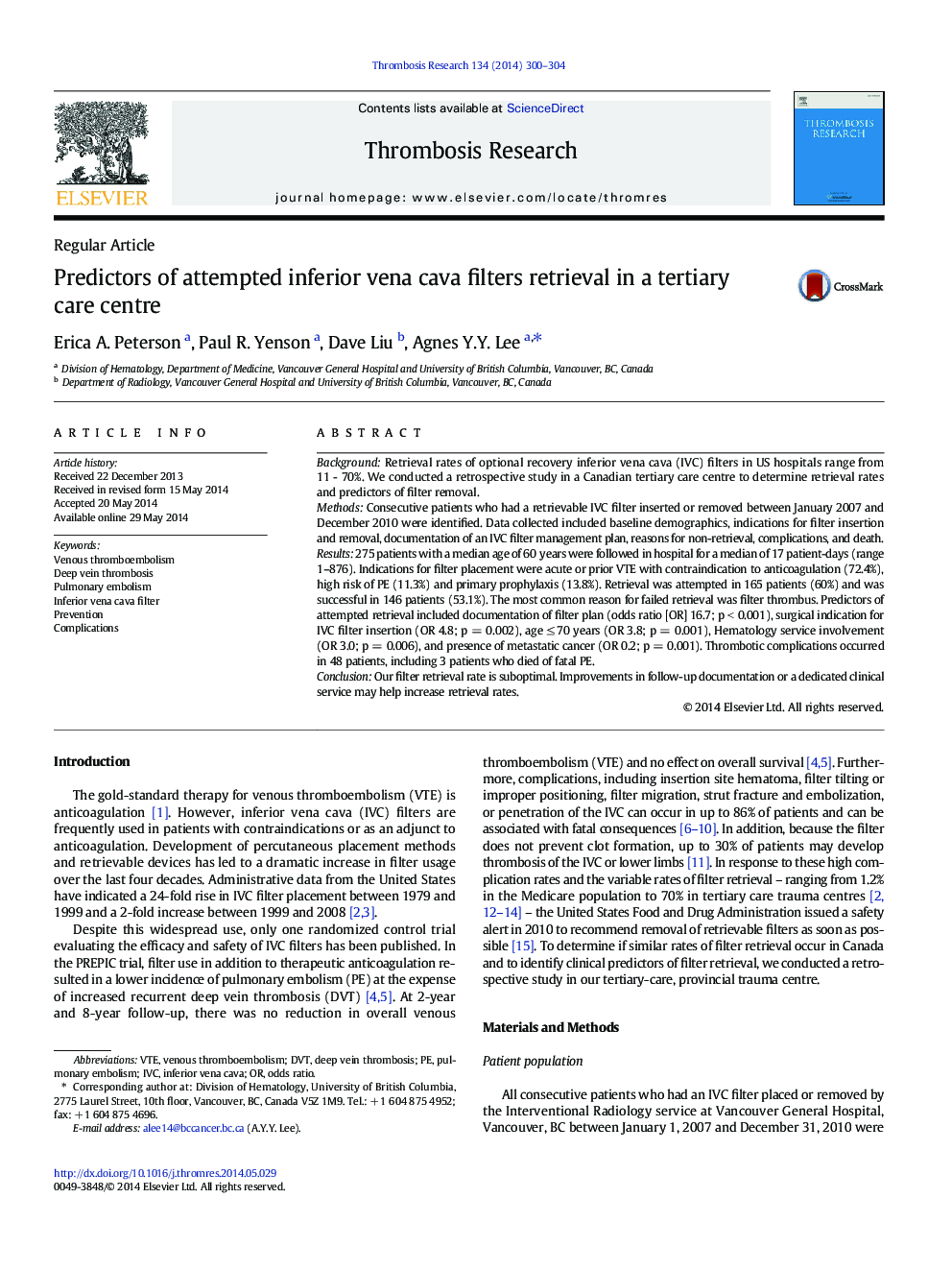| Article ID | Journal | Published Year | Pages | File Type |
|---|---|---|---|---|
| 6002299 | Thrombosis Research | 2014 | 5 Pages |
BackgroundRetrieval rates of optional recovery inferior vena cava (IVC) filters in US hospitals range from 11 - 70%. We conducted a retrospective study in a Canadian tertiary care centre to determine retrieval rates and predictors of filter removal.MethodsConsecutive patients who had a retrievable IVC filter inserted or removed between January 2007 and December 2010 were identified. Data collected included baseline demographics, indications for filter insertion and removal, documentation of an IVC filter management plan, reasons for non-retrieval, complications, and death.Results275 patients with a median age of 60 years were followed in hospital for a median of 17 patient-days (range 1-876). Indications for filter placement were acute or prior VTE with contraindication to anticoagulation (72.4%), high risk of PE (11.3%) and primary prophylaxis (13.8%). Retrieval was attempted in 165 patients (60%) and was successful in 146 patients (53.1%). The most common reason for failed retrieval was filter thrombus. Predictors of attempted retrieval included documentation of filter plan (odds ratio [OR] 16.7; p < 0.001), surgical indication for IVC filter insertion (OR 4.8; p = 0.002), age â¤Â 70 years (OR 3.8; p = 0.001), Hematology service involvement (OR 3.0; p = 0.006), and presence of metastatic cancer (OR 0.2; p = 0.001). Thrombotic complications occurred in 48 patients, including 3 patients who died of fatal PE.ConclusionOur filter retrieval rate is suboptimal. Improvements in follow-up documentation or a dedicated clinical service may help increase retrieval rates.
